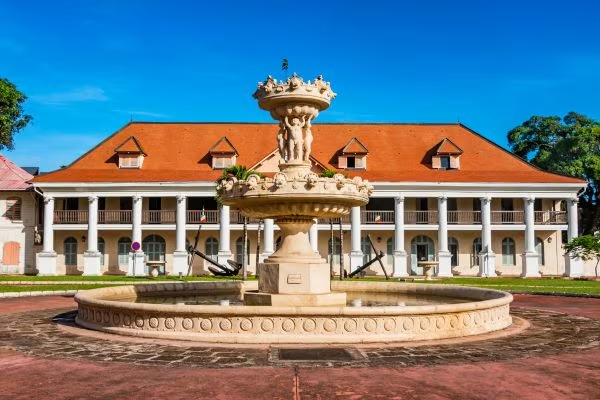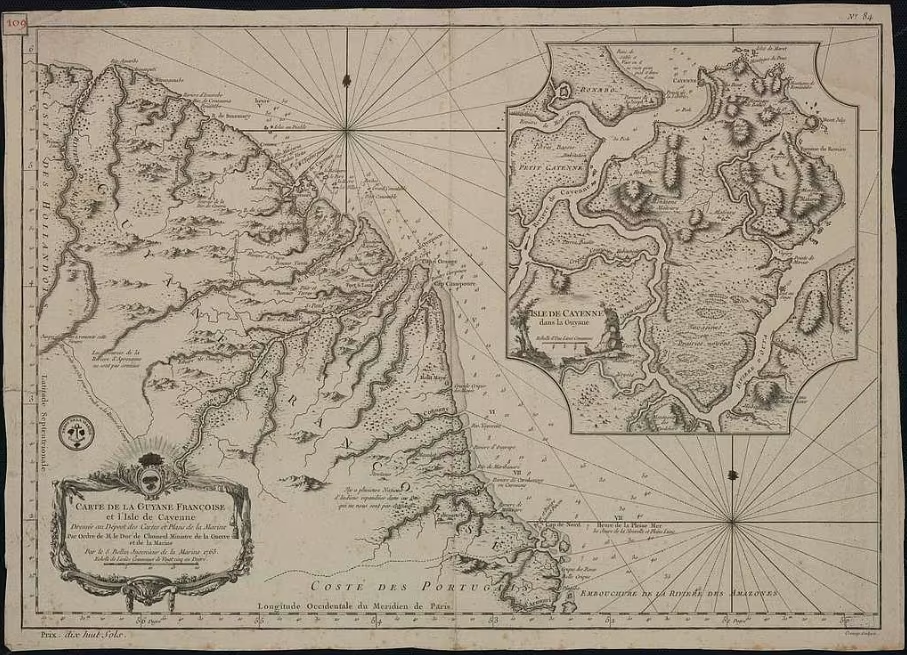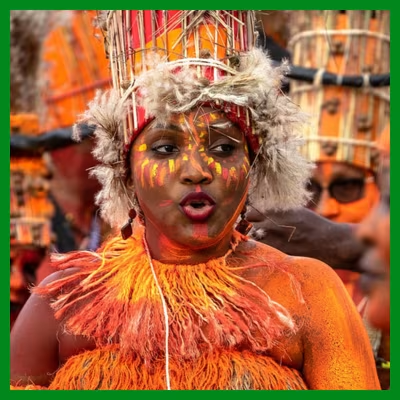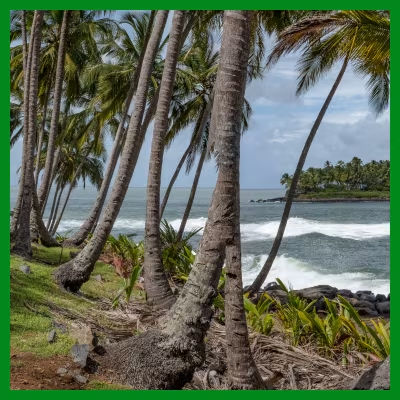Visit Cayenne, in french Guyana

Welcome to Cayenne! Numerous things to see and do await you. Where to start? © Photo credit: Canva Pro - Cayenne Prefecture
What to Do in Cayenne and Its Surroundings ? We tell you everything you need to know here, with places to visit, notable buildings, and tips to fully enjoy Cayenne and discover French Guiana.
Before sharing the 10 must-do activities in Cayenne, let's explore Cayenne and its rich history together.
Cayenne, Who Are You?
Located between Suriname and Brazil, Cayenne is the capital of French Guiana. Bordered by the Atlantic Ocean, Cayenne reflects a true cultural melting pot with Amerindian, Creole, Brazilian, and many other influences. With a population of about 63,000 inhabitants, it offers a rich experience in history and diversity.
Unique : The Romantic Legend of Cayenne's Origins
Did you know that a touching legend tells the origins of Cayenne ? It is said that in the 17th century, a man named Caïenne, the son of King Cépérou of the Kali'na tribe (an indigenous Amerindian people of South America living in the Guiana Plateau region), fell in love with Princess Bélem. To win her heart, he performed magical feats.
In gratitude, King Cépérou renamed the village after his son, making Cayenne a city with a romantic past.
The legend of Cayenne and Cépérou is a beautiful story from the oral and cultural heritage of French Guiana. Although it is not historically verifiable, it remains an important part of the local identity and collective imagination of Cayenne and its inhabitants.
The History of Cayenne, from the Amerindians to Contemporary Cayenne

An idea of Cayenne in the 18th century © Photo credit: The map of French Guiana and the Isle of Cayenne in 1763 - picryl.com
The First Amerindian Settlements in Cayenne
The history of Cayenne begins long before the arrival of Europeans, dating back to the 3rd century when Amazonian Amerindians, particularly the Kali'na, settled on the coast. These first inhabitants developed fascinating cultures and traditions that continue to influence the region today.
Cayenne in the Colonial Era
The 16th century marks the beginning of a period of colonization. In 1657, French Guiana became a permanent French colony. The French established plantations, bringing with them new techniques and traditions. The slavery introduced by European settlers profoundly shaped local society and the economy.
Life in Cayenne in the 19th Century
The abolition of slavery in 1848 was a significant turning point for French Guiana. This period also saw the creation of the famous penal colony of Cayenne by Napoleon III. The penal colony, with its historical sites like the Îles du Salut (Île Royale, Île Saint-Joseph, and Île du Diable), became a key part of local history. Today, these islands are must-visit tourist destinations where one can explore the remnants of that era and understand French Guiana's role in penal history.
The Gold Rush and Cayenne
In 1855, the discovery of gold in the region attracted fortune seekers from around the world, boosting the local economy and contributing to the commercial development of Cayenne. This gold rush added a touch of adventure and prosperity to the region's history.
Departmentalization and Development of Cayenne
In 1946, French Guiana became an overseas department of France, leading to rapid modernization of infrastructure and public services in Cayenne. The city transformed with the establishment of numerous administrative institutions and improved living conditions.
The Guiana Space Center
In 1965, the creation of the Guiana Space Center in Kourou marked a new era of economic and technological development. This event transformed the region with modern facilities like the Félix-Éboué International Airport in Matoury and the international port of Dégrad-Des-Cannes in Rémire-Montjoly. Today, the space center is a symbol of innovation and French Guiana's role in global space exploration.
The Island of Cayenne Today
Cayenne, Rémire-Montjoly, and Matoury form the island of Cayenne, the vibrant heart of French Guiana. This area is home to the majority of businesses, activities, bars, entertainment venues, and museums, making it an attractive hub for residents and visitors alike.
Administrative and commercial activities still dominate Cayenne, but the city is also a place where the past and present coexist harmoniously. Historical sites, bustling markets, and natural spaces make Cayenne an essential destination for those looking to discover the cultural richness and fascinating history of French Guiana.

The Place du Coq, a place rich in history © Photo credit: Canva pro
.
Cayenne: good to know
What to do in Cayenne ?
Activities and Events
Celebrate the Carnival of Cayenne

The carnival in Cayenne is one of the capital's central events, taking place from Epiphany in January until Ash Wednesday in February or March.
This event draws its inspiration from the European carnival. During the colonial period, colonists participated in the carnival while the slaves were excluded. Despite this prohibition, slaves secretly organized celebrations, viewing the carnival as a way to experience a taste of freedom, celebrate fertility and harvests in the African way, and mock the colonists.
Today, the Cayenne carnival is characterized by parades of costumed groups around floats, with spectators lining the streets.
Climb the Butte du Fort Cépérou for a Panoramic View of Cayenne
Looking to gain some elevation? Overlooking Cayenne, the Butte du Fort Cépérou, a designated historic monument, offers a breathtaking panorama of the city. Just a short walk from Place des Palmistes, this hill is the original site of Cayenne's founding. It's a must-visit for anyone wanting to immerse themselves in the rich history of the city.
Discover the Museum of Guyanese Cultures in Cayenne
This museum delves into the diverse cultures of Guyana, from the Amerindians to the Creoles, and including Brazilian and Haitian communities. The Museum of Guyanese Cultures is housed in two renovated, iconic homes in Cayenne. Both locations feature collections of objects from various groups such as the Amerindians, Bushinengues, Creoles, Hmong, Brazilians, Haitians, and more.
Relax at Montabo Beach in Cayenne
Montabo Beach is one of the most beloved spots in Cayenne, offering a pleasant setting to relax and enjoy nature.
Located near the city center, this nearly 2 km stretch of sand attracts both locals and travelers.
It's also popular with early morning and late afternoon athletes, thanks to its two trails: the Montabo Trail and the Mont Bourda Trail.

The Salvation island Salvation : Adventures and History in the Heart of French Guiana! © Photo Credit: Canva Pro
Explorer les Salvation Island
We also invite you to explore the archipelago of the Îles du Salut. Although the Îles du Salut are located in Kourou, they are part of the Cayenne territory. This archipelago consists of Île Royale, Île Saint-Joseph, and Île du Diable. During your visit, you'll discover the remains of the infamous penal colony, dine at the inn, and take a refreshing swim. Additionally, it's possible to stay overnight, offering a complete and immersive experience.
There are also points to visit:
the tip of the Almond trees
Pointe Buzaré
Saint-Joseph Point
To visit all the points of interest in complete peace of mind, we advise you to rent a car in Cayenne, making your travel easier.
Distance between Cayenne and popular towns
Cayenne to Saint-Laurent-du-Maroni: 268km
Cayenne to Kourou: 64km
Cayenne to Saint-Gerges: 189km
When should you travel to Cayenne?
The best time to visit Cayenne is from July to November, during the dry season. Carnival in February and March is also exciting, despite the occasional rain. Plan ahead according to your climatic preferences and your interest in local events.
What hotels are there in Cayenne?
Central Hotel Cayenne
Grand Hotel Montabo
Mercure Cayenne Royal Amazonia
Ker Alberte Hotel
Palmistes Hotel
Amandiers Hotels
Le Guyane hotel
Where to eat in Cayenne
You'll find restaurants downtown and in the Hibiscus district.
Favourites: La Villa and Boeuf au jardin
Where to have a drink in Cayenne?
Cocktail bars: Spot Rooftop, 1922
Atmospheric bars: Cocosoda, Cayenne Café, Hitbox
Bar open on Mondays: Bar des Palmistes
There are also several bars in the Hibiscus district
Does Cayenne have an entertainment venue?
There are two concert halls on the route de Montabo, l'Encre and le Zephir.
Cayenne a-t-elle un cinéma ?
Yes, Cayenne has a cinema on Place des Palmistes : l'Agora.
Who is the Mayor of Cayenne in French Guiana ?
The Mayor of Cayenne is Sandra Trochimara.
Previous mayors were :
April 8, 2010: Marie Laure Phinera Horth
March 15, 2008 : Rodolphe alexandre

Subscribe to our newsletter
Subscribe to our newsletter and receive our best offers of the moment exclusively


Tripadvisor

Travel award

Kayak
@Europcar French Guiana
